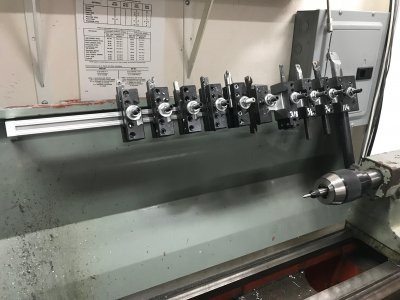- Joined
- Mar 25, 2020
- Messages
- 108
How many QCTP Holders is enough and what should I consider doing to keep them out of the way and easy to find and manage?
Given the resources and space would having:
What do you all reccomend?
Also as a side note do you generally kiss the edge of a new carbide insert with a diamond lapping stone before putting it into use or use as received?
Given the resources and space would having:
- One set dedicated to holding replaceable carbide tools for hard metals.
- One set dedicated to holding replaceable carbide tools for soft metals.
- One set dedicated to holding shop ground HSS tools.
- How many holders in each set? (inside and outside turning, threading, ???)
- Which general purpose holders to use as default holders? (250-201 or 250-201)
- How to keep a plethora of holders with sharp edges from hiding when I need them and cutting what I don't want cut?
What do you all reccomend?
Also as a side note do you generally kiss the edge of a new carbide insert with a diamond lapping stone before putting it into use or use as received?




